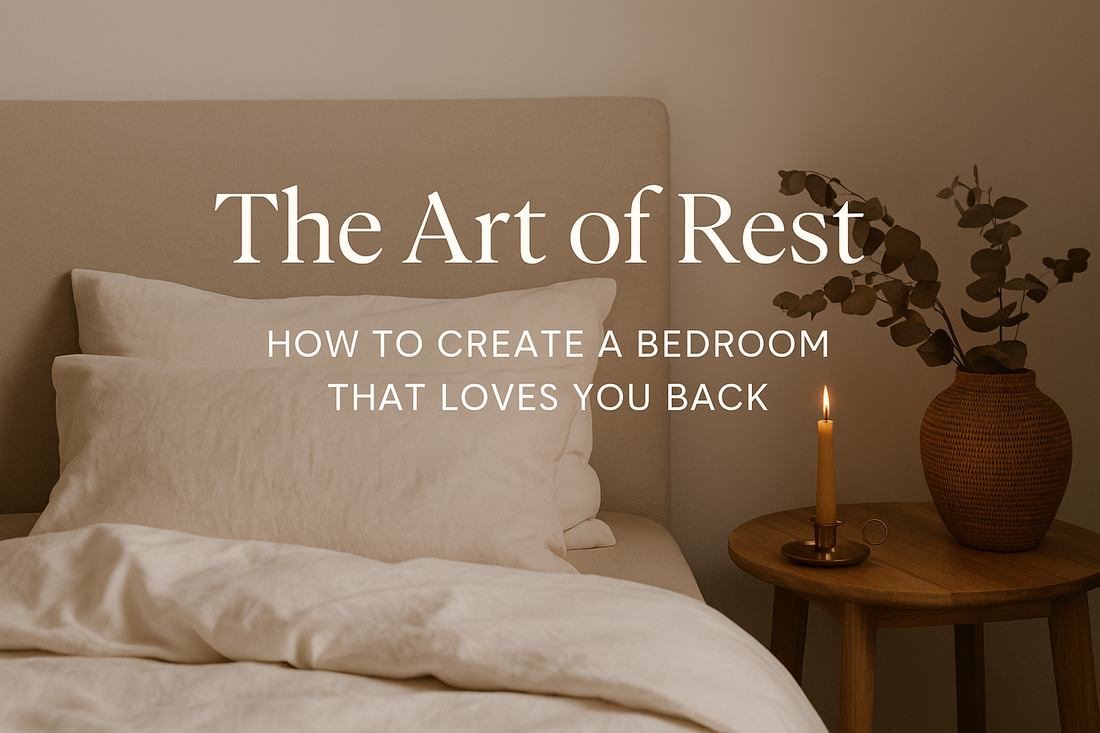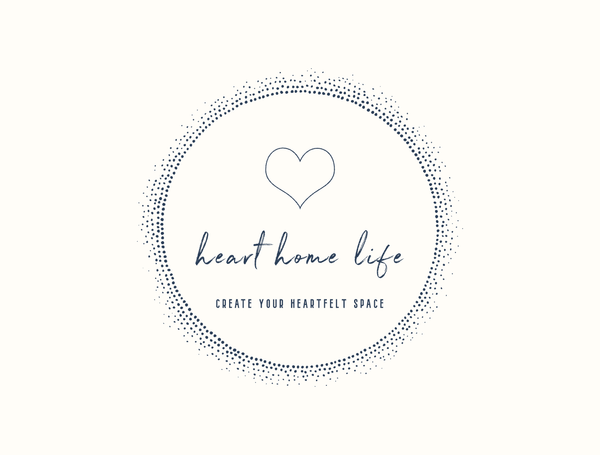
The Art of Sleep: How to Create a Bedroom That Loves You Back
Share
The Art of Rest: How to Create a Bedroom That Loves You Back
Simple, thoughtful tips for better sleep, deeper calm, and waking without fatigue.
In the quiet moments of the evening, we all long for the same thing: rest that feels real. Not just sleep, but restoration — the kind that softens the noise of the day and lets the body and mind truly let go.
And yet, for so many of us, rest is elusive. We fall into bed hoping to feel better by morning, only to wake up tired, stiff, or unrested.
At HeartHomeLife, we believe that rest is not a luxury — it’s a human need. And the spaces we create around us, especially in the bedroom, have the power to help us feel safe, held, and restored. This is the art of rest: not just falling asleep, but creating an environment that actively supports it.
1. Light Shapes the Way We Feel
Long before we fall asleep, our bodies begin to wind down based on cues from our environment — and light is one of the strongest signals we receive.
Bright overhead lights tell the brain it’s still time to be alert. In contrast, soft, warm light invites the nervous system to slow down. Creating gentle transitions from day to night — by using lamps, warm-toned bulbs, or candlelight — can help your body shift naturally into a restful state.
Think of lighting as an emotional layer of your space. The flicker of a beeswax taper, the subtle glow of a branch-shaped lamp — these aren’t just décor elements, they’re invitations to soften. And when the world feels too fast, that kind of softness matters more than ever.
2. The Right Pillow Makes a Real Difference
A good pillow isn’t about luxury — it’s about support. It helps your neck and shoulders release the day. It keeps your head in gentle alignment with your spine, letting your muscles fully relax. The wrong pillow, by contrast, can be the quiet reason you wake up tired or carry tension into the next morning.
At HeartHomeLife, we believe the right pillow feels like a gift to your whole body — and that one size never fits all. That’s why we offer three distinct styles, each chosen for a specific kind of sleeper:
- The Posture Pillow: A butterfly-shaped, cervical support pillow designed to gently guide your neck and shoulders into healthy alignment. Ideal for those who experience stiffness or soreness in the upper body.
- The DreamForm Pillow: Our contoured memory foam option, perfect for side and back sleepers who crave both support and pressure relief. It softly cradles the head while encouraging natural spinal posture.
- The Pectin™ Cervical Pillow: Lightweight and breathable, this compact TPE pillow offers dynamic orthopedic support with excellent airflow — a smart choice for hot sleepers or anyone seeking zero-pressure, washable comfort.
Whichever shape speaks to your body’s needs, choosing the right pillow is one of the most powerful ways to support better sleep — not just to rest your head, but to truly let go.
3. Keep Things Cool, But Comforting
Temperature plays a surprisingly important role in how well we sleep. Experts recommend keeping your bedroom between 16–19°C (60–67°F) to help the body naturally lower its core temperature — a key part of entering deep sleep cycles.
But a cool room doesn’t mean cold. The goal is balance: breathable sheets, a lightweight duvet, and perhaps the subtle pressure of a weighted blanket (coming soon to HeartHomeLife) to create that feeling of being held. When we feel physically supported and temperature-regulated, the body stops fidgeting, and the mind follows.
A room that’s cool, quiet, and comfortably layered becomes a cocoon — not just a place to sleep, but a place to rest.
4. Minimise Clutter, Maximise Calm
The mind responds to what it sees. A room filled with clutter — even beautiful clutter — can send the brain signals of unfinished tasks, visual noise, or distraction. The bedroom, of all places, should be the opposite.
Creating visual simplicity allows your nervous system to downshift. That doesn’t mean your room has to be bare — just intentional. Choose a few pieces you love, and let them breathe. Clear your nightstand. Tuck things away. Let your surfaces — and your sleep — be soft and open.
When your space feels calm, your body begins to believe that it’s safe to relax. And that’s where real rest begins.
5. Make Your Bed an Invitation, Not an Afterthought
Your bed is where you spend nearly a third of your life. And yet, it’s so easy to let it become functional rather than beautiful — a place to collapse into, rather than return to with intention.
We believe your bed should feel like a gentle invitation — a sensory reminder that you’re allowed to rest. For some, that means cool cotton sheets. For others, a pillow mist or a freshly fluffed pillow. Maybe it’s the glow of a candle at the end of the day, or the ritual of pulling back the covers slowly, like turning a final page.
Whatever your version looks like, the point is this: sleep is not just about going unconscious. It’s a return. To quiet, to self, to softness.
The Takeaway
If you’re waking up tired, it might not be your body that’s failing you — it may be your environment that’s not quite supporting you yet.
Better sleep is a layered experience. It’s about light, temperature, comfort, and care. At HeartHomeLife, we believe in creating spaces that do more than look good — they feel good. They restore you. They love you back.
So the next time you turn in for the night, take a moment to soften your space. Dim the light. Choose the pillow that truly fits. Let go of the clutter. And let rest become something more than sleep — let it become a ritual of return.
